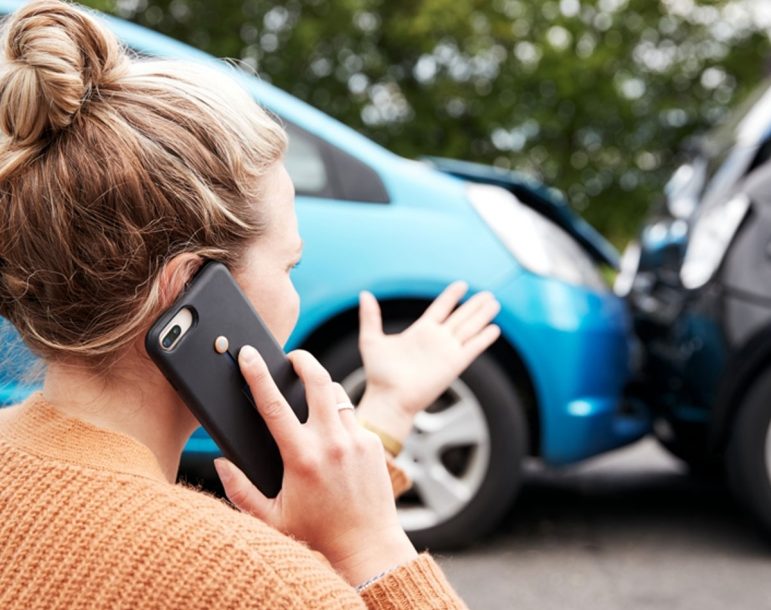There is a very well known presumption that rear-end collision accidents are always the fault of the driver who crashes into the rear of the car in front. This is not always the case. The purpose of this article is to describe why, and under what circumstances, the driver of the vehicle that crashes into the back of another vehicle is not always to blame.
Car accidents occur in a variety of ways. From a blow on the bumper to high-speed frontal collisions, the scenarios are virtually unlimited. A common type of collision is when a car collides from the rear into another car.
Car accidents and the concept of negligence
Negligence is the term used to describe when a person’s behavior is below established standards of care. Basically, it is considered negligent if the actions of the driver are less than the actions that a reasonable person would have or would not have done under the circumstances that caused the accident.
To prove that a driver was negligent in connection with a car accident, you must first prove that there was a duty. This is very simple since all drivers have a duty to be careful when operating a motor vehicle. Second, you must prove that the other driver breached his duty. Drivers can breach their duty of reasonable care in a number of ways; for example:
· Not paying attention to the road
· Not stopping within a reasonable time
· Not driving at a reasonable speed (not only based on published speed limits but also on road conditions)
· Not keeping control of the vehicle
· Not giving up the right of way
· Not using car signals, and
· Not following a safe distance.
Third, you must prove that the breach of the other driver’s duty was the cause of the accident.
Finally, you must establish that you suffered actual damage, such as bodily injury or damage to your vehicle, as a result of the accident.
Establishing guilt in a rear-end collision accident.
The driver of the car that rear-ends the vehicle ahead will almost always be considered at least partially negligent. Each driver has a duty to follow other vehicles at a safe distance.
The reason for keeping a safe distance is that vehicle drivers sometimes slow down or stop suddenly or unexpectedly, to avoid danger on the road, for example, or simply because there is traffic congestion. You are expected to maintain enough distance between you and the car in front to prevent a collision if an unexpected stop or sudden significant slowdown occurs.
However, it is possible that the driver in front, the person driving the rear-ended car, was negligent as well. Consider the following scenarios:
· A driver suddenly backs up
· A driver suddenly stops to make a turn and does not make the turn
· The driver’s brake lights do not work, or
· The driver has a flat tire, but he fails to pull over to the shoulder and does not turn on the vehicle’s emergency lights.
In each of these examples, the driver of the car that is rear-ended will probably be considered negligent. The legal impact of that driver’s negligence will depend on how much the driver’s negligence contributed to the car accident, and how that particular state handles accident situations where there is more than one guilty party.
If more than one driver is guilty of a car accident, the result varies from state to state. Texas follows a fairly rigorous system of “Comparative negligence” also known as “Proportionate responsibility”.
Texas Law specifically states a plaintiff “may not recover damages if his percentage of responsibility is greater than 50 percent.” The trier of fact—generally a jury in personal injury cases—must “determine the percentage in responsibility, stated in whole numbers,” for each party to a given accident. This may include third parties who are not directly involved in the lawsuit.
Were you or a loved one injured in a car accident?
Contact our experienced motor vehicle accident lawyers at 832-481-3427. Get in touch with us immediately so we can evaluate your case for free. We are available 24 hours a day, 7 days a week. You can also fill out a form by clicking here.
PMR Law is considered one of the Best Law Firms of America, by Rue Ratings. Several of our attorneys have been given the honor of being named Super Lawyers by Thomson Reuters. The American Institute of Personal Injury Attorneys has named our attorneys 10 Best in Client Satisfaction. Speaking of personal injury, Attorney and Practice Magazine awarded our attorneys with Top 10 Personal Injury Attorney distinctions. The National Trial Lawyers, as well as the American Academy of Attorneys, have named two of our attorneys as Top 40 Under 40. Our attorneys have been recognized as Best Attorneys of America, by Rue Ratings. PMR Law is a proud member of the Multi-Million Dollar Advocate Forum.

